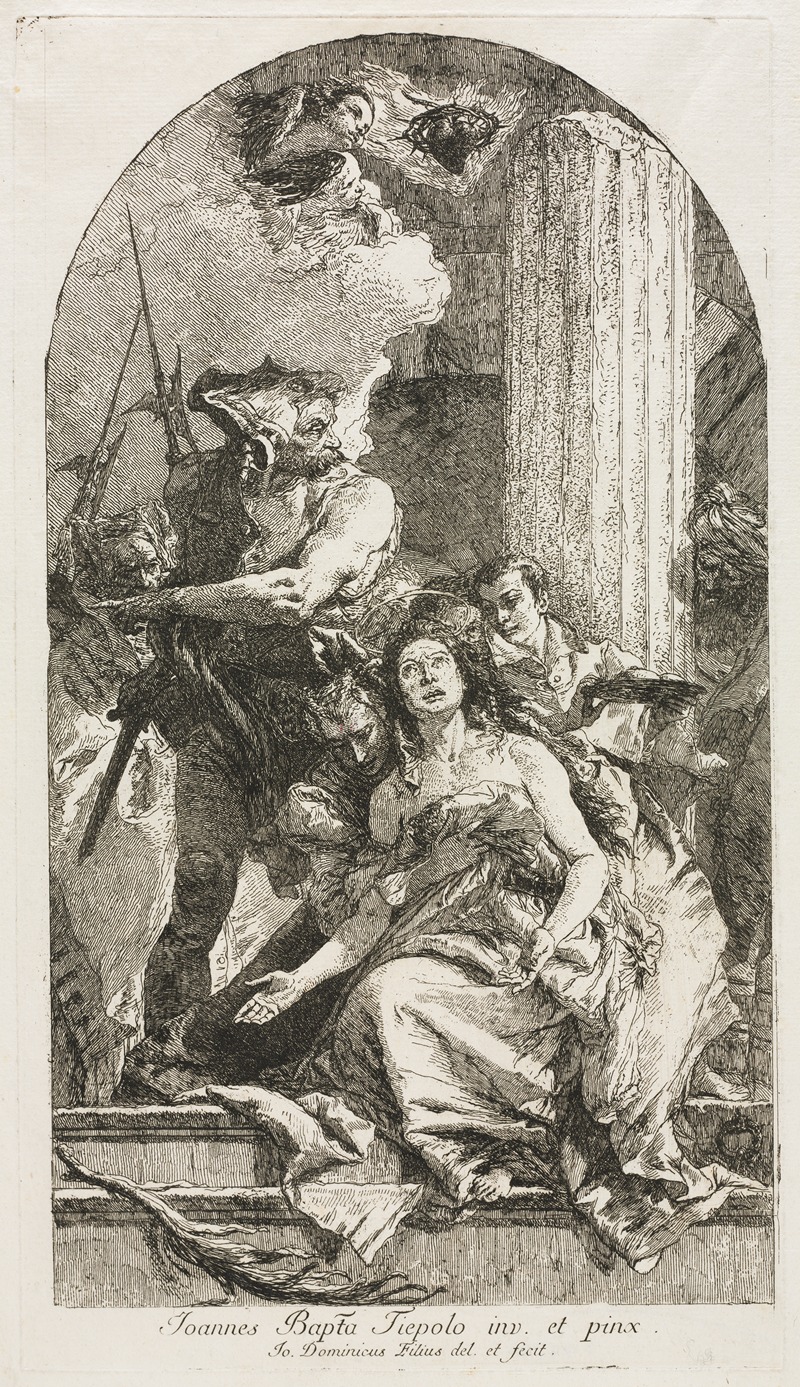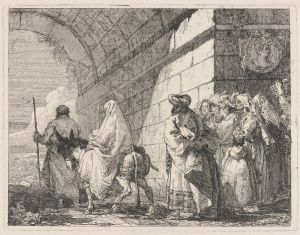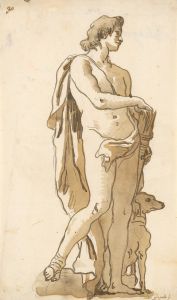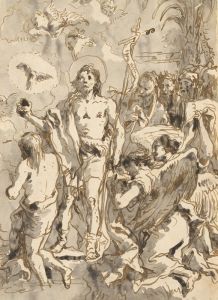
Martyrdom of St. Agatha
A hand-painted replica of Giovanni Domenico Tiepolo’s masterpiece Martyrdom of St. Agatha, meticulously crafted by professional artists to capture the true essence of the original. Each piece is created with museum-quality canvas and rare mineral pigments, carefully painted by experienced artists with delicate brushstrokes and rich, layered colors to perfectly recreate the texture of the original artwork. Unlike machine-printed reproductions, this hand-painted version brings the painting to life, infused with the artist’s emotions and skill in every stroke. Whether for personal collection or home decoration, it instantly elevates the artistic atmosphere of any space.
Giovanni Domenico Tiepolo, an Italian painter and printmaker, was a prominent figure in the 18th century, known for his vibrant and dynamic compositions. He was the son of the renowned artist Giovanni Battista Tiepolo, and he carried forward his father's legacy while developing his own distinctive style. One of his notable works is the "Martyrdom of St. Agatha," which reflects his mastery in capturing dramatic religious scenes.
The "Martyrdom of St. Agatha" depicts the harrowing story of St. Agatha, a Christian martyr from Catania, Sicily, who lived during the 3rd century. According to historical accounts, Agatha was a young woman of noble birth who dedicated her life to Christianity. During the persecution of Christians under the Roman Emperor Decius, she was arrested and subjected to brutal torture for refusing to renounce her faith and her vow of chastity. Her steadfastness and suffering have made her a revered figure in Christian hagiography.
Giovanni Domenico Tiepolo's painting captures the intense emotional and physical turmoil of St. Agatha's martyrdom. The composition is marked by its dramatic use of light and shadow, a technique that Tiepolo employed to heighten the emotional impact of the scene. The figures are rendered with dynamic poses and expressive gestures, characteristic of Tiepolo's style, which was influenced by the Baroque tradition.
In the painting, St. Agatha is depicted at the moment of her torture, surrounded by her tormentors. Her expression conveys a sense of serene resignation and spiritual strength, reflecting her unwavering faith. The use of color in the painting is particularly noteworthy; Tiepolo employs a rich palette to create a vivid and emotionally charged atmosphere. The contrast between the dark, shadowy figures of the executioners and the illuminated figure of St. Agatha serves to emphasize her purity and sanctity.
Tiepolo's work is also notable for its attention to detail and the careful rendering of textures, from the softness of St. Agatha's garments to the harshness of the instruments of torture. This meticulous attention to detail enhances the realism of the scene, drawing the viewer into the narrative and evoking a visceral response.
The "Martyrdom of St. Agatha" is an exemplary work that showcases Giovanni Domenico Tiepolo's ability to convey complex religious themes with emotional depth and technical skill. It reflects the artistic trends of the 18th century, where religious art was used not only to depict sacred stories but also to inspire and move the viewer. Tiepolo's interpretation of St. Agatha's martyrdom is a testament to his talent in capturing the human experience and the spiritual dimensions of his subjects.
Today, Tiepolo's works, including the "Martyrdom of St. Agatha," are appreciated for their artistic merit and their contribution to the rich tapestry of religious art. They continue to be studied and admired for their ability to convey powerful narratives through the medium of paint, offering insights into the religious and cultural milieu of the time.


















